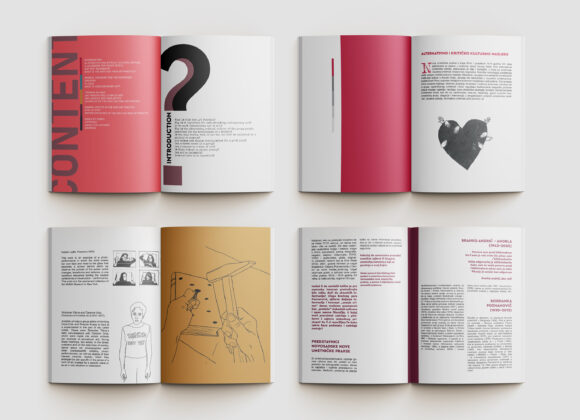
Promotion of Literary Publications: How to Understand New Art Practice
‘How to Understand New Art Practice’ is an illustrated guide in Serbian and English, through Novi Sad’s new art practice for young people, and the promotion of this edition will be held on 23 November in the District, as part of the Other? Europe programme arch.
In order to understand contemporary art, we must know and understand its language. That is why the book ‘How to Understand New Art Practice (A Serbian-English Illustrated Guide to New Art Practices in Novi Sad for Young People)’ problematises the questions – What is contemporary art? Do we even need it and how is it created? Are the works of art exhibited in galleries or museums the only ones that are valuable? Can artists create in a group? Can a concept be a work of art? What makes conceptual artists different from others? What does conceptual poetry mean, and what is an artist’s book? Are connected verses and rhyme required for a good poem? Can art be invisible? Does it have to be pretty? What is Novi Sad’s new artistic practice of the 60s and 70s and why is it important for understanding contemporary art?
Novi Sad’s new artistic practice from the late 60s and early 70s is a unique phenomenon in the cultural history of the city and its meaning goes beyond the local context. What we have here is an alternative cultural model in the sphere of literature, visual arts, film, etc., about the so-called ‘second line’ of art (Jerko Ješa Denegri’s term) based on experimenting, ideas and concepts. It permeates the fields of visual art, philosophy, sociology, linguistics, literature, etc. Its authors (Slobodan Tišma, Katalin Ladik, Judita Šalgo…) use artistic expressions such as performance, body art, art actions, artists’ books, first-person narration, exhibitions and interventions in non-gallery spaces, land art, arte povera, etc.
National critics and theorists, such as Ješa Denegri and Miško Šuvaković, dealt with this topic. Selected works by figures of Novi Sad’s new artistic practice are now located in the permanent collections of the Museum of Contemporary Art of Vojvodina in Novi Sad and the Museum of Contemporary Art in Belgrade, while significant (retrospective) exhibitions have also been organised. PhD theses were written about the work of these artists (for example, Judita Šalgo), several important monographs were published as well as poetry anthologies in which the authors of the new artistic practice are represented; some of them have even been edited into collected works (Vujica Rešin Tucić). Nevertheless, it is mostly the small artistic and academic circles who are well acquainted with the importance and role of Novi Sad’s new artistic practice, but young people are not. Such art is not mentioned in high school textbooks and is not taught at school. That is why the interactive, bilingual illustrated manual ‘How to Understand New Art Practice’ is above all aimed at young people and a wider audience with the desire to revive the urban artistic identity.
This book is not an analytical study, it does not valorise or standardise – it is just one of the guideposts and incentives for moving through Novi Sad’s new artistic practice, its language, and the activities of individuals and groups. It is written like a ‘beginner’s guide’ with the desire of approaching the ideas and language of non-traditional artistic media, works of art that are not oil on canvas, sculpture or a rhyming sonnet.
The authors of the essays are literary critic and theoretician Dragana V. Todoreskov, PhD, and writer Ljiljana Maletin Vojvodić. The students of the ‘Bogdan Šuput’ High School of Graphic Design made illustrations for this book.
The book will be presented in a non-traditional way – through an exhibition by students of the ‘Bogdan Šuput’ High School of Graphic Design.